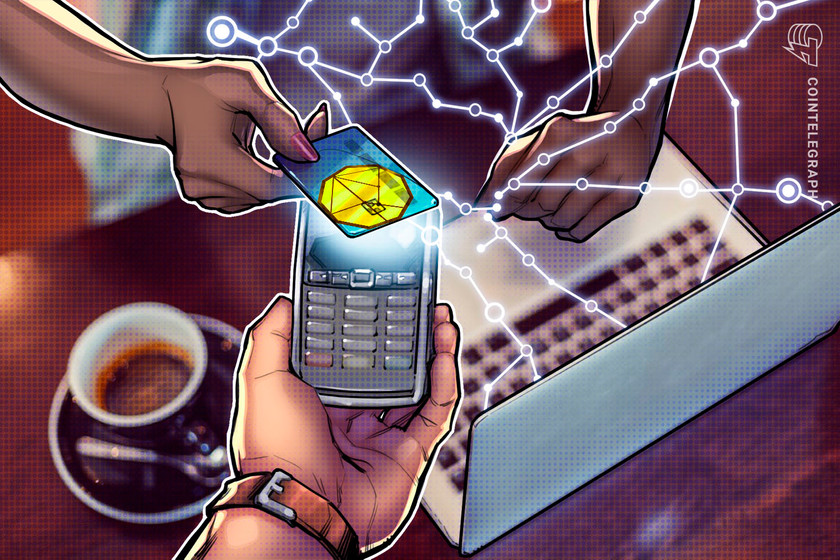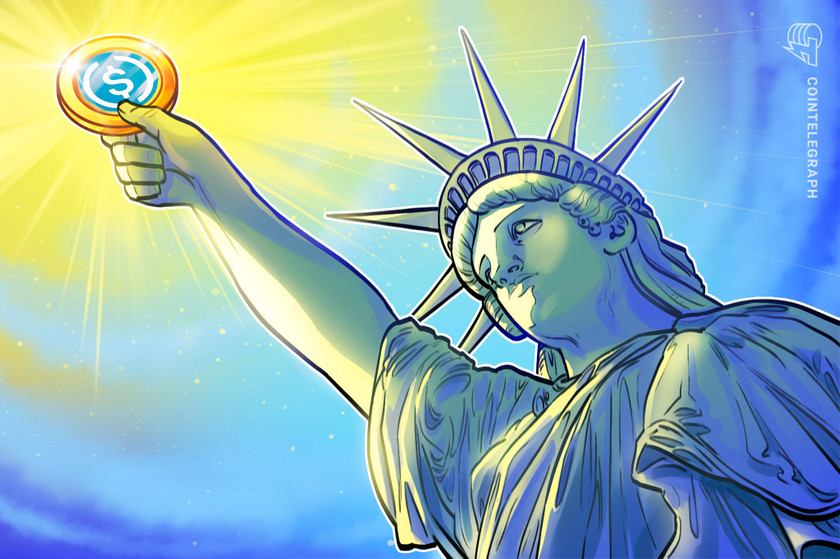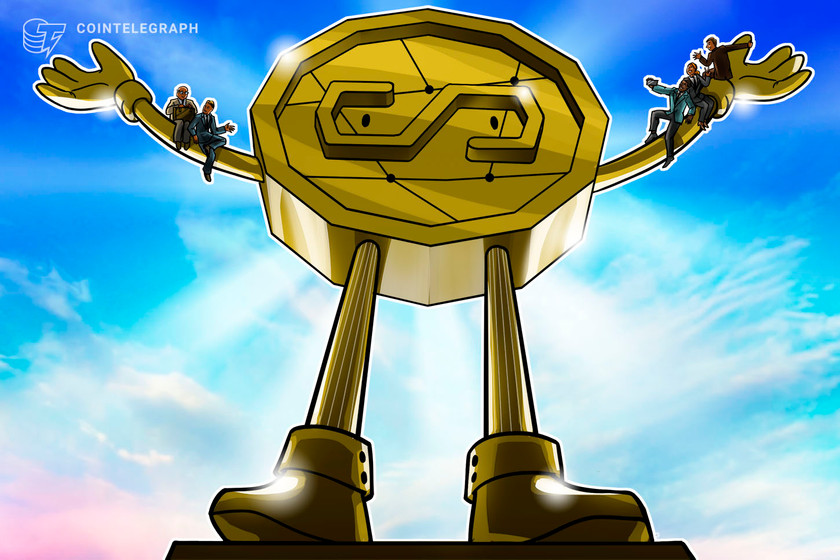Is the IMF shutting the door prematurely on Bitcoin as legal tender?


Should the International Monetary Fund leave the door open for developing countries struggling with inflation? “Bitcoin was made for the Global South.”
There’s been little sunlight this crypto winter, so it may seem odd to present the “Bitcoin as legal tender” argument again. That is, will or should any country — other than El Salvador and the Central African Republic (CAR), which have already done so — declare Bitcoin (BTC) an official national currency?
The International Monetary Fund (IMF) raised the issue again last week in a paper putting forth nine crypto-focused policy actions that its 190 member countries should adopt. First on its list of “don’ts” was elevating crypto to “legal tender.” Or, as the multilateral lending institution’s executive board assessment stated:
“Directors generally agreed that crypto assets should not be granted official currency or legal tender status in order to safeguard monetary sovereignty and stability.”
Maybe it’s not fair to ask the question with crypto back on its heels, but was the IMF right to warn its member banks about cryptocurrencies? And if so, what exactly is lacking in the composition of private digital money that makes it unsuitable as an official national currency? Maybe it’s Bitcoin’s well-documented volatility, but if that’s the case, couldn’t the world’s oldest cryptocurrency still grow into a new role as an auxiliary scrip — perhaps in a few years when it has more users, is more liquid, and exhibits less price variance?
The IMF must tread carefully
“The IMF’s mandate is to promote global economic stability and growth. It is therefore reasonable that the IMF has recently advised countries to refrain from granting legal tender status to crypto-assets, which are, by design, often disruptive in nature,” Gavin Brown, associate professor in financial technology at the University of Liverpool, told Cointelegraph. “Such disruption does arguably present just as many opportunities as threats, but the IMF must tread a more prudent path when faced with such open-ended uncertainty.”
“There are very good economic reasons why most countries would not want to adopt cryptocurrencies like BTC as their local scrip,” James Angel, associate professor at Georgetown University’s McDonough School of Business, told Cointelegraph. “In short, they don’t want to lose the profits from printing their own money or the economic control over the economy that fiat currencies provide.”
While crypto maximalists may skewer governments for printing money non-stop to paper over deficits, “sometimes, the right thing to do is to print money,” added Angel, “like in the Great Recession or the pandemic. The trick is not to print too much, which happened in the pandemic.”
‘Bitcoin was made for the Global South’
In its policy paper, the IMF had multiple arguments for its position beyond crypto’s well-documented volatility. It could expose government revenues to foreign exchange rate risk. Domestic prices “could become highly unstable” because businesses and households would spend time deciding whether to hold fiat or BTC “as opposed to engaging in productive activities.” Governments would have to allow citizens to pay taxes in Bitcoin — and so on.
Adopting crypto as legal tender could even affect a government’s social policy objectives, the IMF paper stated, “particularly for unbacked tokens, as their high price volatility could affect poor households more.”
But questions remain. Even if the IMF arguments are valid and hold in most circumstances, aren’t there exceptions? What about developing countries struggling with inflationary currencies, like Turkey?
“Bitcoin was made for the Global South,” Ray Youssef, co-founder and CEO of Paxful — and a founder of the Built With Bitcoin Foundation — told Cointelegraph. “In the West, a lot of attention is paid toward the suspected volatility of Bitcoin. That’s because the world runs on the dollar and the West is shielded from global inflation. Right now, Turkey has an inflation rate of over 50%, and Nigeria has an inflation rate of over 20% — in these economies, Bitcoin is a strong bet.”


But even in instances like these, it may not be so easy. “In order for cryptocurrency to be used effectively as legal tender in developing countries, governments will [still] need to heavily invest in the technological infrastructure and a suitable regulatory framework,” Syedur Rahman, a partner at law firm Rahman Ravelli, told Cointelegraph. If this can be done, it “will assist in financial inclusion.”
“Adopting a foreign/hard currency or monetary standard is a last resort to rein in hyperinflation,” commented Angel. “But even weak governments like to have the power of the printing press, as it provides a taxation mechanism to pay the troops.”
The Central African Republic made crypto legal tender in April 2022 — the second country to do so, after El Salvador. Some CAR representatives said that crypto would help reduce fees for financial transactions in and out of the country. Maybe that, too, is a valid reason to elevate crypto to official currency.
Rahman acknowledged that “there are benefits such as seeing a reduction in transaction fees for financial transactions. If there is a weak traditional banking system or lack of trust, then cryptocurrency undoubtedly can provide an alternative means of payment.”
“Remittance is a great use case for Bitcoin,” said Youssef. “Money transfer companies charge high fees and funds can take days to arrive.” Bitcoin cuts down on fees, and transactions can take minutes. People who may not have a bank account can take advantage of remittances too. “This is a huge deal when you look at the amount remittances bring into some countries. In El Salvador, remittances account for over a quarter of the country’s GDP.”
Others were dismissive, however. “I think legal tender status in this context is likely a gimmick. I’m not sure how I might be more motivated to send BTC to someone living in CAR just because BTC is now viewed as legal tender in that jurisdiction,” David Andolfatto, economics department chair and professor at the University of Miami’s Miami Herbert Business School, told Cointelegraph.
Moreover, the act of granting a “foreign” currency legal tender status “seems to me to be an admission that a country’s institutions cannot be trusted to govern society effectively,” added Andolfatto, a former senior vice president of the Federal Reserve Bank of St. Louis where he became one of the world’s first central bankers to deliver a public talk on Bitcoin in 2014.
Bitcoin remains questionable as legal tender because it does little to quell the so-called “flight-to-safety” phenomenon, wherein the demand for money shifts violently with sudden changes in consumer or business sentiment, Andolfatto explained.
“These violent swings in the price level are unnecessary […] What is needed is a monetary policy that expands the supply of money to accommodate the demand for money in times of stress. The provision of an ‘elastic currency’ serves to stabilize the price level for the benefit of the economy as a whole.”
“Transaction fees are a friction on global economic activity,” noted Brown, and developing nations often bear the burden of these inefficiencies. Still, “In my view, a pivot to crypto assets, such as in El Salvador today, is a risk too big to take,” Brown said. Georgetown’s Angel added, “El Salvador and CAR are special cases since they did not have their own currency to start with.”
More maturity
Bitcoin is still relatively young and volatile. But with wider adoption, including institutional investors, couldn’t it become a stable asset, more like gold? “There is some merit to this argument,” says Andolfatto. “I believe BTC price volatility will diminish as the product matures.” But even if BTC remains stable for long periods of time, “it will always be susceptible to ‘flight-to-safety’ phenomena that would generate sudden large deflations — or inflations if people are dumping BTC,” he added. “BTC will appear stable, but it will remain fragile.”
Youseff, like some others, suspects the IMF has ulterior motives in all this. The fund is interested in self-perpetuation, he suggested, adding:
“Bitcoin has proven to lower inflation, give more people access to the economy and international work, increase transparency and act as a universal translator of money. It also has the potential to lessen a country’s reliance on international centralized power — like the IMF. It’s not hard to connect the dots on why the IMF is not welcoming of Bitcoin.”
“Cryptoassets such as Bitcoin are still young in currency terms,” noted Brown, but their inherent weaknesses like price volatility and pseudo-anonymity could present “insurmountable challenges from the perspective of nation-states. Nonetheless, Bitcoin has become a backstop alternative when fiat currencies fail through macroeconomic events such as hyperinflation and controls around capital flight.”
If not the lead, still a supporting role?
For the sake of argument, let’s agree with the IMF, crypto skeptics and others that there is no future role for Bitcoin as legal tender or official currency — even in the developing world. Does that still preclude BTC and other cryptocurrencies from playing a useful social or economic role globally?
“I see a very useful role for crypto technology, which is why I have been a vocal proponent of CBDCs [central bank digital currencies] since 2014,” answered Angel. “There are very good reasons why over 100 central banks are working on these.”
But he’s skeptical about Bitcoin because “governments have a long history of pushing private money aside. I’m surprised that it has taken as long as it has for governments to react and attempt to push aside Bitcoin in order to get all the seigniorage revenue for themselves.”
Overall, crypto assets such as Bitcoin may continue “to be held in limbo by many nation states and regulators,” opined Brown, given that they are inherently anti-establishment but also “near impossible” to ban in free societies.
Bitcoin and other digital assets can still serve a positive role as “the trigger forcing the monopoly, which are central banks,” to think again about their monetary policies “and to innovate in response,” said Brown.
































